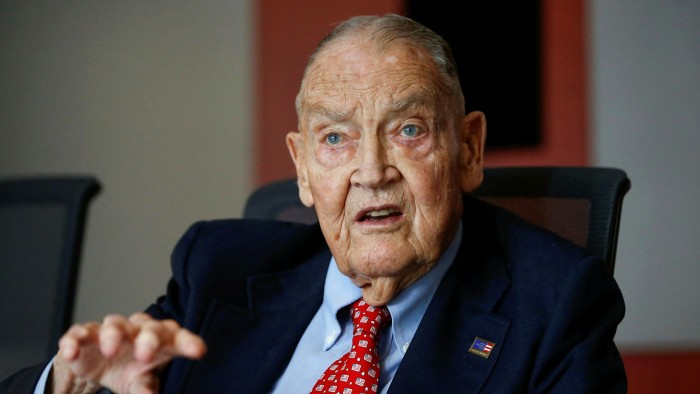Price discovery in markets not imperilled by index funds

Roula Khalaf, Editor of the FT, selects her favourite stories in this weekly newsletter.
The writer is founder and chief executive of Create Research
Just before his death in 2019, index funds pioneer Jack Bogle worried that their relentless rise might not “serve the national interest”.
His worries centred on both the excessive trading in exchange traded funds as well as the prospect of mega indexers — like BlackRock, State Street and Vanguard — controlling a big shareholder vote in leading US companies.
Since then, investment vehicles which passively track market indices have grown further, globally reaching more than $17tn under management in ETFs and mutual funds.
There’s a lot to like about them: low cost, minimal governance, broad diversification, zero key-person risk, and so on. And the case for active funds has been undermined by the failure of the majority of active funds on both sides of the Atlantic to beat their benchmarks after costs.
However, index funds have their own share of critics. One of the most vocal has been Michael Burry of Scion Asset Management, who is known for identifying market bubbles before they pop and made famous by the movie The Big Short.
In late 2019, he argued that index funds artificially drive up the price of those component companies with the largest capitalisation as they benefit from their proportional share of investment inflows.
He said this made markets top heavy and prone to bubbles. Worse still, individual stocks are selected for index inclusion mostly on their size, not their fundamentals. This creates an “index premium”, as constituents benefit from the broader buying of the fund.
This, in turn, hinders financial markets’ cardinal role in price discovery: enabling buyers and sellers to agree a price at which they’re willing to trade. The critics argue that exceptional companies are included in the same basket as mediocre ones as a part of bulk buying.
Unsurprisingly, the idea that index funds could be fools’ gold is hotly disputed by their supporters. If stock prices moved in lock-step within an index, they argue, there would be a strong correlation between them. If anything, that correlation has been steadily declining since 2012.
Furthermore, despite their headlong growth, index funds accounted for 17.5 per cent of stocks globally in 2017, according to estimates collated by BlackRock. The more recent estimates hover around 20 per cent, varying between investor segments, geographies and sub asset classes. That means that the majority of pricing decisions are still made by active managers.
This view is supported by research by Professor Andrew Lo, director of the MIT Laboratory for Financial Engineering, who has argued that price discovery could be effective even if passive strategies represented around 90 per cent of the investment universe.
Finally, supporters of index funds argue that if they create big price anomalies, how come active managers have failed to exploit them to deliver stellar returns following the global financial crisis in 2008?
In response, active managers point an accusing finger at the ultra-loose monetary policies of central banks that came in the wake of the crisis. These turned index investing into a one-way bet and progressively sidelined time-honoured strategies like betting on mean reversion of trends.
So the debate continues. In the meantime, institutional investors have moved on by embarking on a “third way” that combines active and passive styles within a diversified portfolio. The implied pragmatism rests on two considerations, according to the annual pension surveys of Create Research.
First, markets’ price discovery role currently is nowhere near the danger zone, since it is the flows and not the stock of funds that count. Trading sets prices. So long as there are some active traders in the market, price discovery will occur.
Second, there are no all-weather strategies in investing. So a prudent portfolio must use a horses-for-courses approach that deploys index funds in more liquid efficient markets and active funds in less-liquid volatile inefficient markets. Hence eulogies for active management are premature.
Indeed, interest in it is already rising again as active managers have been staging a revival since last February, according to a recent survey from Bank of America. Some 70 per cent of them outperformed the Russell 1000 index in May, making it one of the best months in history. That is unlikely to be a flash in the pan, if the recent steep rises in performance fees at some UK asset managers are any guide.
One day, the worries over the impact of passive funds on efficient market pricing may prove to be founded. Till then, investors will be reluctant to overlook their merits.

Click here to visit the ETF Hub
Comments